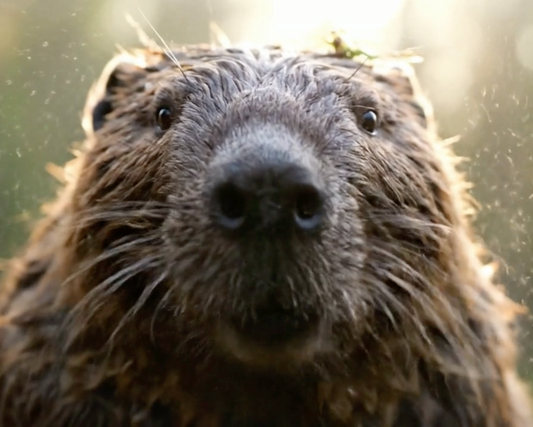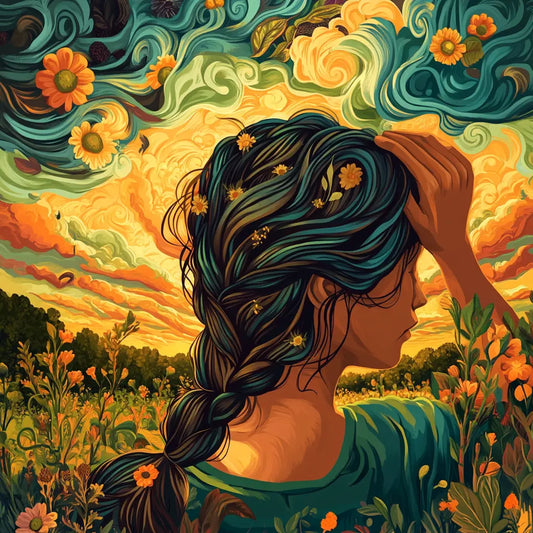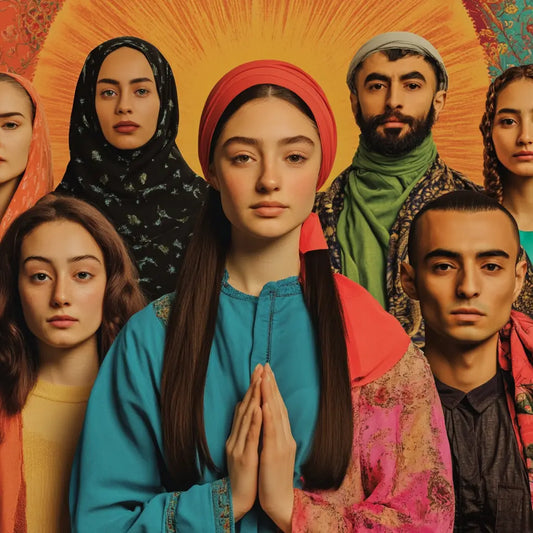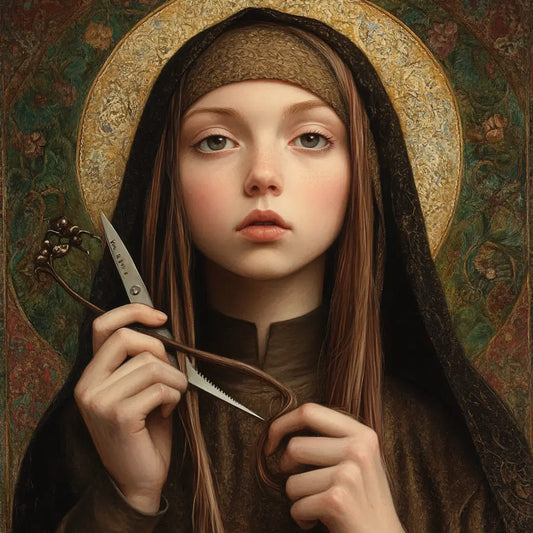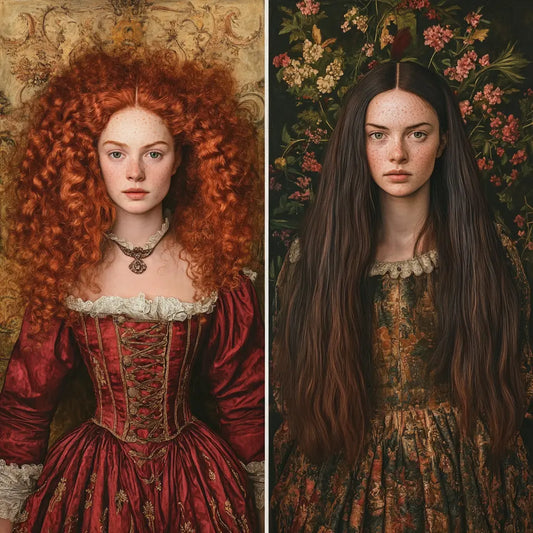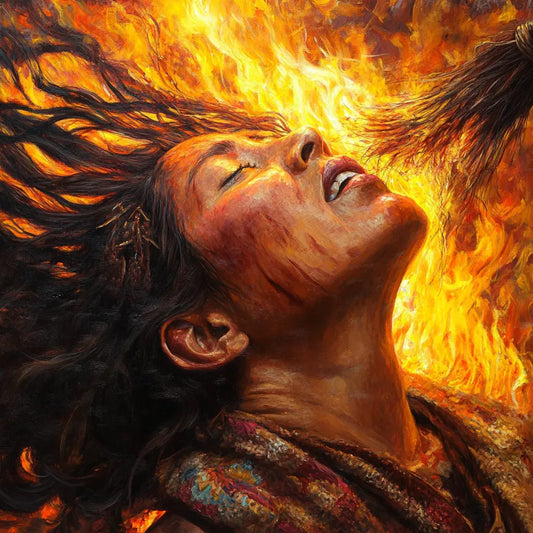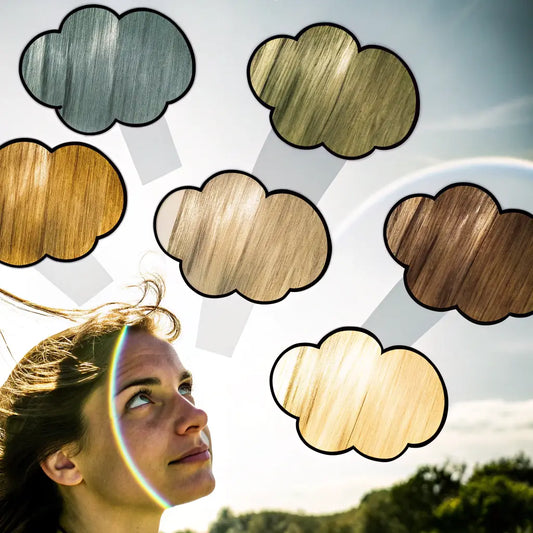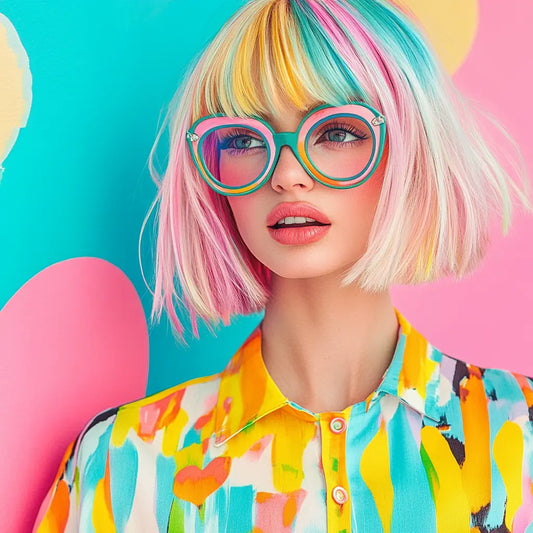Hair holds deep cultural , spiritual , and social significance in both China and Japan . From elaborate hairstyles that indicated social status to spiritual beliefs that hair is connected to one's being, these customs reflect a rich history. In this article, we'll explore the myths , traditions , and role of hair in China and Japan, providing lesser-known facts, insights, and modern reflections. We'll discuss how these ancient customs are still honored today, and provide practical advice and interesting facts.

Hair and social status in China
In ancient China, hairstyles were more than just decoration - they reflected social hierarchy , family status , and family honor . Different hairstyles indicated a person's place in society and their relationship with family and society.
The importance of hairstyles for women
One of the most famous hairstyles in ancient China was the Jiānfǎ (笄发), when young girls tied their hair together for the first time during a coming-of-age ceremony called Ji Li . This ceremony usually took place between the ages of 15 and 20 and symbolized a girl's transition to womanhood and her readiness for marriage. Before the ceremony, girls wore their hair loose, symbolizing innocence and youth . The Jiānfǎ was not only a style, but also an important sign of a woman's social identity .

- Fun fact: Historical sources from the Tang Dynasty (618–907 AD) indicate that high-class women often wore extremely elaborate hairstyles to show off their wealth and status. Studies have shown that upper-class women spent an average of six hours preparing their hairstyles, often including gold , jade , and pearl hairpins to showcase their wealth.

Married women also wore certain hairstyles that indicated their marital status . The Chui Ji (垂髻), a loose-fitting hairstyle, was for young, unmarried women. Meanwhile, the Wan Ji (纨髻), a more structured hairdo, was worn by married women .

Hair as a reflection of social order
In traditional Chinese society, hair was considered a gift from one's parents , and cutting it was considered a serious cultural taboo. Confucian teachings on filial duty (孝顺) emphasized that altering one's body, including one's hair, was a sign of disrespect to one's parents. As a result, both men and women often grew long hair to honor their families.
- Historical fact: During the Ming Dynasty (1368–1644), hair was such an important part of a person's identity that certain punishments involved public shaving of the head , which was considered a mark of shame. Research on Ming Dynasty punishments has shown that approximately 15% of documented public punishments involved the forced shaving of a person's head in order to humiliate them.
Additionally, during the Qing Dynasty (1644–1912), the Manchu rulers introduced the mandatory queue hairstyle , in which the front of the head was shaved and the rest of the hair was left long and braided. The queue was a sign of submission to Qing rule, and refusal to follow this tradition was often punishable by death.

- Insight into the numbers: A study of Qing Dynasty laws found that 1 in 10 executions in the early 18th century was for refusing to wear the queue hairstyle. This hairstyle became a clear sign of political submission to the ruling power.
Hair in Japanese folklore and spirituality
Hair also had great spiritual significance in Japan . Long, uncut hair was associated with inner strength , purity , and spiritual energy . From geisha to samurai , hair was an important part of personal identity and cultural symbolism .

The role of hair in geisha culture
In Japan, geisha were known for their elaborate hairstyles, which often reflected their status and experience . The shimada hairstyle, characterized by an elegant bun and often adorned with hairpins, became a symbol of geisha grace and artistry . The more elaborate the hairstyle, the higher the geisha's level of skill .

- Fun fact: Geisha took great care in maintaining their hairstyles. Traditional geisha would sleep on special cushions called takamakura , which were essentially wooden blocks designed to protect their hairstyles. A single loose pin could mean that the geisha was not taking care of her job or was lacking discipline. On average, hairstyles took five to seven hours to style, and some geisha would visit the hairdresser three times a week to maintain their appearance.
Samurai and the spiritual significance of hair
For samurai, the chonmage hairstyle had both practical and symbolic meaning. With the top of the head shaved and the remaining hair tied into a low ponytail, this hairstyle was important in battle, as it helped to keep the helmet firmly in place. However, beyond its practical benefits, it also symbolized the warrior's commitment to the Bushido code .

- Insight into the numbers: During the Edo period (1603–1868), over 90% of samurai continued to wear the chonmage hairstyle even in times of peace, as it became a symbol of the samurai class. A samurai who lost the topknot lost his honor, and in some cases, it could lead to seppuku (ritual suicide) in order to restore his lost dignity.

In Japanese folklore, hair was also believed to have spiritual energy . Cutting hair during mourning symbolized the release of emotional pain and the beginning of a new spiritual stage. Additionally, in many Japanese ghost stories, or yūrei tales , vengeful spirits are often depicted with long, flowing hair , symbolizing unresolved traumas or unsettled souls .

A modern reflection of traditional hair customs
Although ancient hairstyles are not widely used today, their significance is still felt in modern China and Japan . These traditions are often reflected in cultural events , ceremonies , and everyday customs.
Hair in a traditional Chinese wedding
One custom that still survives in China is the hair-combing ceremony called Shang Tou (上头), performed before a wedding. During the ceremony, the bride and groom's hair is combed by their parents or elders, symbolizing the transition from youth to adulthood . Each combing motion represents longevity , prosperity , and peace in the lives of the newlyweds.

- Historical fact: This tradition dates back to the Han Dynasty (206 BC - 220 AD) and is one of the few ancient hair rituals that is still widely practiced today. A 2020 study found that 68% of Chinese couples include a hair combing ceremony in their wedding rituals, reflecting a deep respect for this symbolism of new beginnings .
The revival of Japanese hair traditions
In Japan, many traditional hair customs are preserved through festivals and ceremonies. During the Shichi-Go-San festival, which celebrates the growth of children, girls wear kimonos and traditional Japanese hairdos to celebrate their health and well-being .

Sumo wrestlers also maintain the chonmage hairstyle, symbolizing their dedication to the discipline of sumo wrestling . In addition to sports, hair offering ceremonies are also held at Shinto shrines , where people can offer strands of hair as a symbol of gratitude or spiritual purification .
- Insight into the numbers: A 2021 survey found that 45% of Japanese women feel a strong emotional connection to their ancestral hair traditions. Many of them participate in ceremonial hair rituals during important life events, such as weddings or cultural festivals.

Myth busting and interesting facts
- Myth: Only men were encouraged to grow long hair in ancient China.
Fact: In ancient China, both men and women grew long hair. Cutting their hair was considered a sign of disrespect to their parents, as hair was considered a gift from them. - Fun fact: Geisha hairstyles were so intricate that only trained hairdressers could do them. On average, a geisha would spend six to eight hours a week maintaining their hairstyle.
- Myth: The queue hairstyle was widely accepted without resistance during the Qing Dynasty.
Fact: Many Han Chinese opposed the queue, and over 1,000 rebellions were recorded during the early Qing Dynasty. Refusal to adopt the hairstyle often resulted in severe punishments , including executions. - Fun fact: In Japanese ghost stories, long, unkempt hair is often seen as a sign of vengeful spirits . Hair is believed to store emotional residue , which is why many yūrei are depicted with long, flowing hair.
- Myth: Ancient Asian hairstyles were always complex and formally structured.
Fact: While many hairstyles were elaborate, everyday hairstyles were often simple and practical. For example, in rural areas, Chinese women often tied their hair in a low bun to make it easier to work.

Practical tips or solutions
Inspired by ancient hair traditions from China and Japan, here are some practical hair care tips for modern women:
- Incorporate traditional ingredients: In China, ginseng and green tea were used to strengthen hair. In Japan, camellia oil has been used for centuries to make hair shiny and nourished .
- Create Thoughtful Hair Rituals: Try incorporating hair care rituals that reflect life transitions. Think about how you can create your own modern version of the traditional Shang Tou hairdressing ceremony to mark important life moments.
- Protect your hair while you sleep: Inspired by the geisha takamakura , consider using a silk pillowcase to reduce hair breakage and maintain your hairstyle overnight.
- Wear your hair with pride: Whether you prefer short hairstyles or long hair, remember that in Chinese and Japanese cultures, hair has always been a symbol of personal strength and identity . Take care of your hair in a way that honors your inner strength.

Frequently Asked Questions (FAQ)
1. Why is hair important in Chinese culture?
In Chinese culture, hair symbolizes respect for family and one's social role . Cutting one's hair was considered a sign of disrespect, as hair was considered a gift from one's parents.
2. How is hair related to spirituality in Japan?
In Japan, hair is believed to have spiritual energy . Cutting hair can symbolize emotional purification , and long hair is often associated with spiritual strength .
3. What did geisha hairstyles symbolize?
Geisha hairstyles indicated their status and experience . The more elaborate the hairstyle, the higher the geisha's status in her household.
4. Why was the Queue hairstyle introduced in China during the Qing Dynasty?
The Queue was a political sign of submission to Qing rule. Refusing to wear it was considered an act of rebellion against the government.
5. Are traditional hair customs still practiced in modern China and Japan?
Yes, although everyday hairstyles have changed, traditional hair rituals are still practiced during ceremonies , festivals , and important life events in both countries.

Conclusion
From ancient Chinese customs that honored family and social structure to the spiritual connection to hair in Japan, the hair customs of these cultures speak volumes about identity and tradition. These ancient hair customs continue to influence modern practices , reminding us of the importance of expressing ourselves and honoring our cultural identity . Whether you're inspired by the elegant hairstyles of geishas or the honorable braids of samurai , these customs offer profound insights into the role of hair in personal and cultural life.






